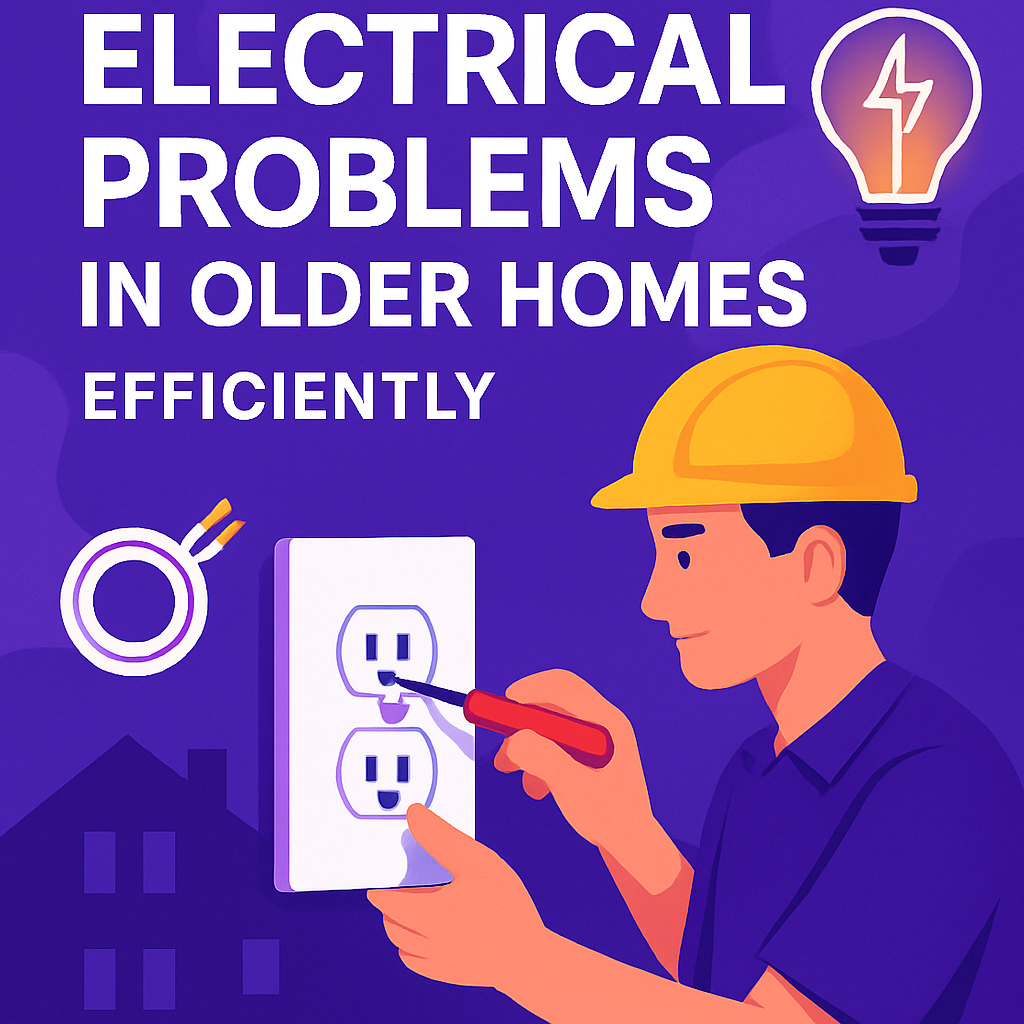Efficient Solutions for Common Electrical Issues in Older Australian Homes
Introduction
Australia’s charm is found in its blend of new developments and quaint, older homes. While these heritage properties offer aesthetic appeal, they often conceal outdated electrical systems that can be hazardous and inefficient. Addressing electrical problems in older homes is not just about safety—it’s about embracing efficient solutions that align with modern standards and environmental goals.
Understanding Electrical Problems in Older Homes
Older Australian homes are particularly prone to electrical issues due to outdated wiring, insufficient circuit capacity, and the absence of modern safety features. These problems can lead to frequent overloads, risking both property damage and personal safety. Data from Energy Safe Victoria highlights that electrical faults account for a significant portion of residential fires each year, underscoring the need for compliance with current safety standards and regulations.
Real-world examples illustrate these challenges: consider the frequent tripping of circuit breakers or the inability to support modern appliances, both common in homes built before the 1970s. The Australian government has implemented safety regulations to mitigate these risks, ensuring that homeowners upgrade their electrical systems to meet current standards.
Efficient Solutions for Rewiring and Upgrades
A comprehensive upgrade of electrical systems in older homes is not only a matter of safety; it’s a step towards energy efficiency. A notable case study involves the successful rewiring of a Sydney heritage home. This project involved replacing outdated wiring and installing modern circuit breakers and RCDs (Residual Current Devices). The result was a significant reduction in electrical faults and energy consumption.
When selecting materials for such upgrades, the choice between brands like Clipsal and Schneider becomes crucial. Both offer high-quality electrical components, but Clipsal is often lauded for its robust performance in residential settings, whereas Schneider’s solutions are praised for their innovation in energy management. For detailed assistance with such upgrades, consider exploring our General Electrical Services.

Enhancing Energy Efficiency in Older Homes
Investing in energy-efficient upgrades can dramatically reduce utility bills and environmental impact. Data indicates that homes incorporating energy-efficient systems can lower energy consumption by up to 30%. This not only reduces expenses but also contributes to a sustainable future.
Smart appliances and systems play a pivotal role in these savings. For instance, smart thermostats and LED lighting significantly cut down energy usage. A comparison between traditional and smart systems shows clear advantages in efficiency and cost-effectiveness. Implementing such technologies can be seamlessly integrated with our Energy Efficiency Upgrades.

Safety Measures and Modern Electrical Systems
Safety is paramount, especially in older homes susceptible to electrical hazards. A Melbourne Victorian house recently underwent a safety upgrade, incorporating modern switchgear and compliance with Australian standards. The installation of ABB and Siemens switchgear was crucial, with each brand offering unique benefits: ABB provides user-friendly solutions, whereas Siemens is known for its durability and advanced technology.
Ensuring compliance with Australian standards not only enhances safety but also prevents legal complications. In situations requiring immediate attention, our Emergency Electrical Repairs service is essential.
Case Study: Successful Renovations with Solar Integration
Solar integration is a forward-thinking solution for enhancing the sustainability of older homes. A comprehensive solar retrofit in a Brisbane home demonstrated significant energy savings and a positive return on investment. By comparing solar panel brands like SunPower and REC, homeowners can choose solutions tailored to their energy needs. SunPower panels offer high efficiency, while REC panels are noted for their affordability and reliability.
Given current Australian energy prices, the ROI from solar investments is increasingly attractive, with payback periods often less than five years. For larger scale projects, consider our Commercial Solar Projects for more insights.
FAQ Section
What are the most common electrical problems in older homes?
Outdated wiring, insufficient circuit capacity, and lack of safety devices are prevalent issues. These problems can lead to frequent overloads and potential fire hazards.
How can I ensure my home complies with modern safety standards?
Engaging a professional electrician to assess and upgrade your home’s electrical system is essential. Consider services like ASP Level 2 Works for compliance and safety assurance.
Are energy-efficient upgrades worth the investment?
Absolutely. Energy-efficient upgrades can reduce energy consumption by up to 30%, significantly lowering utility bills and environmental impact.
Conclusion & CTA
Addressing electrical issues in older Australian homes is a multifaceted process that involves safety upgrades, energy efficiency improvements, and potential solar integration. These solutions not only enhance safety but also offer substantial financial and environmental benefits.
Ready to transform your home into a safe and efficient haven? Book a free site assessment with Hilts in your area for expert solutions tailored to your needs.


